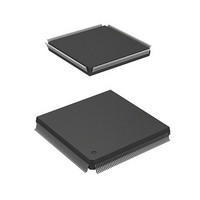HD6417750RF240DV Renesas Electronics America, HD6417750RF240DV Datasheet - Page 357

HD6417750RF240DV
Manufacturer Part Number
HD6417750RF240DV
Description
MPU 3V 16K I-TEMP,PB-FREE 208-QF
Manufacturer
Renesas Electronics America
Series
SuperH® SH7750r
Datasheet
1.D6417750RBP240DV.pdf
(1164 pages)
Specifications of HD6417750RF240DV
Core Processor
SH-4
Core Size
32-Bit
Speed
240MHz
Connectivity
EBI/EMI, FIFO, SCI, SmartCard
Peripherals
DMA, POR, WDT
Number Of I /o
28
Program Memory Type
ROMless
Ram Size
48K x 8
Voltage - Supply (vcc/vdd)
1.4 V ~ 1.6 V
Oscillator Type
External
Operating Temperature
-40°C ~ 85°C
Package / Case
208-QFP
Lead Free Status / RoHS Status
Lead free / RoHS Compliant
Eeprom Size
-
Program Memory Size
-
Data Converters
-
Available stocks
Company
Part Number
Manufacturer
Quantity
Price
Company:
Part Number:
HD6417750RF240DV
Manufacturer:
HITACHI
Quantity:
7 287
- Current page: 357 of 1164
- Download datasheet (7Mb)
9.5.2
Standby mode is exited by means of an interrupt (NMI, IRL, or on-chip peripheral module) or a
reset via the RESET pin.
Exit by Interrupt: A hot start can be performed by means of the on-chip WDT. When an NMI,
IRL*
clocks are supplied to the entire chip, standby mode is exited, and the STATUS1 and STATUS0
pins both go low. Interrupt exception handling is then executed, and the code corresponding to the
interrupt source is set in the INTEVT register. In standby mode, interrupts are accepted even if the
BL bit in the SR register is 1, and so, if necessary, SPC and SSR should be saved to the stack
before executing the SLEEP instruction.
The phase of the CKIO pin clock output may be unstable immediately after an interrupt is
detected, until standby mode is exited.
Notes: 1. Only when the RTC clock (32.768 kHz) is operating (see section 19.2.2, IRL
Exit by Reset: Standby mode is exited by means of a reset (power-on or manual) via the RESET
pin. The RESET pin should be held low until clock oscillation stabilizes. The internal clock
continues to be output at the CKIO pin.
9.5.3
In standby mode, it is possible to stop or change the frequency of the clock input from the EXTAL
pin. This function is used as follows.
1. Enter standby mode following the transition procedure described above.
2. When standby mode is entered and the chip's internal clock stops, a low-level signal is output
3. The input clock is stopped, or its frequency changed, after the STATUS1 pin goes low and the
4. When the frequency is changed, input an NMI or IRL interrupt after the change. When the
5. After the time set in the WDT, clock supply begins inside the chip, the STATUS1 and
at the STATUS1 pin, and a high-level signal at the STATUS0 pin.
STATUS0 pin high.
clock is stopped, input an NMI or IRL interrupt after applying the clock.
STATUS0 pins both go low, and operation is resumed from interrupt exception handling.
1
, RTC, or GPIO*
2. GPIO can be used to cancel standby mode when the RTC clock (32.768 kHz) is
Exit from Standby Mode
Clock Pause Function
Interrupts), standby mode can be exited by means of IRL3–IRL0 (when the IRL3–
IRL0 level is higher than the SR register IMASK mask level).
operating (when the GPIO level is higher than the SR register IMASK mask level).
2
interrupt is detected, the WDT starts counting. After the count overflows,
Rev.7.00 Oct. 10, 2008 Page 271 of 1074
Section 9 Power-Down Modes
REJ09B0366-0700
Related parts for HD6417750RF240DV
Image
Part Number
Description
Manufacturer
Datasheet
Request
R

Part Number:
Description:
KIT STARTER FOR M16C/29
Manufacturer:
Renesas Electronics America
Datasheet:

Part Number:
Description:
KIT STARTER FOR R8C/2D
Manufacturer:
Renesas Electronics America
Datasheet:

Part Number:
Description:
R0K33062P STARTER KIT
Manufacturer:
Renesas Electronics America
Datasheet:

Part Number:
Description:
KIT STARTER FOR R8C/23 E8A
Manufacturer:
Renesas Electronics America
Datasheet:

Part Number:
Description:
KIT STARTER FOR R8C/25
Manufacturer:
Renesas Electronics America
Datasheet:

Part Number:
Description:
KIT STARTER H8S2456 SHARPE DSPLY
Manufacturer:
Renesas Electronics America
Datasheet:

Part Number:
Description:
KIT STARTER FOR R8C38C
Manufacturer:
Renesas Electronics America
Datasheet:

Part Number:
Description:
KIT STARTER FOR R8C35C
Manufacturer:
Renesas Electronics America
Datasheet:

Part Number:
Description:
KIT STARTER FOR R8CL3AC+LCD APPS
Manufacturer:
Renesas Electronics America
Datasheet:

Part Number:
Description:
KIT STARTER FOR RX610
Manufacturer:
Renesas Electronics America
Datasheet:

Part Number:
Description:
KIT STARTER FOR R32C/118
Manufacturer:
Renesas Electronics America
Datasheet:

Part Number:
Description:
KIT DEV RSK-R8C/26-29
Manufacturer:
Renesas Electronics America
Datasheet:

Part Number:
Description:
KIT STARTER FOR SH7124
Manufacturer:
Renesas Electronics America
Datasheet:

Part Number:
Description:
KIT STARTER FOR H8SX/1622
Manufacturer:
Renesas Electronics America
Datasheet:

Part Number:
Description:
KIT DEV FOR SH7203
Manufacturer:
Renesas Electronics America
Datasheet:











